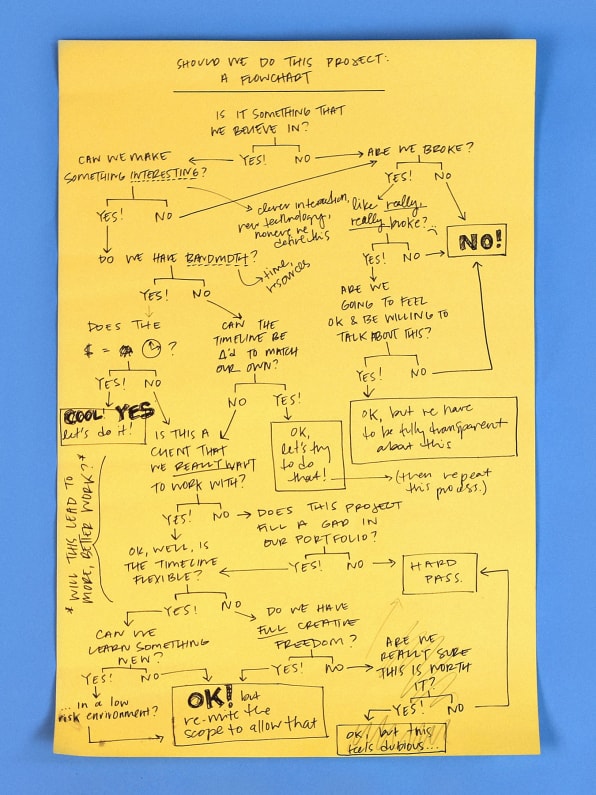Job Outlook 5 10 30 Years Game Designer
For freelancers or a new design studio, navigating the intricacies of client relationships can be one of the biggest initial challenges. How much should you charge? How do you find new clients? And once you do, will the work they want be worth it for you, both financially and morally?
For that latter point, the New York City-based design studio HAWRAF has developed a simple system using an old decision-making standby: the flowchart. The new studio, led by Google Creative Lab alums, has been using the chart as a loose guiding framework for choosing what type of work they want to take on and for reinforcing the principles the studio was founded on. The chart revolves around the central question: "Is this something that we believe in?"

After meeting at Google, the three partners behind HAWRAF—Carly Ayres, Nicky Tesla, and Andrew Herzog—decided to open their own studio so they would have the freedom to operate and take on the kind of work that they want. Disillusioned by the exclusivity of the design industry and proprietary methodology of some of the prominent firms they had worked in prior, the three wanted HAWRAF to be the opposite: a studio of total transparency, with no set design process and a fluidity that allows each of them to work across various positions. In previous projects, they've live-streamed a 26-hour work session and made a collaborative website. They are also creating video journals that detail what the day-to-day is like in setting up a new design studio.
Of course, part of adhering to those founding ideas also means choosing what kind of projects to work on. That's where the flowchart comes in. It works like all flowcharts do, with branching paths of actions leading helpfully toward a final conclusion. If the work is something you believe in, then what can your studio bring to the table? And do you have the resources to make it happen? If it's not something you believe in, evaluate how broke you are. Then proceed thoughtfully.
At their essence, flowcharts are a structure for analyzing the pros and cons of a situation, and that's something this one does nicely. Use it to stick to the intention you set out for yourself as an independent designer or design studio, any time you're trying to decide whether a project is worth it. If the answer turns out to be yes, then turn to this visualization from Jessica Hische to figure out how much you should be getting paid.
Job Outlook 5 10 30 Years Game Designer
Source: https://www.fastcompany.com/90118139/should-you-take-that-design-job
Posted by: jacksonwitimen.blogspot.com

0 Response to "Job Outlook 5 10 30 Years Game Designer"
Post a Comment